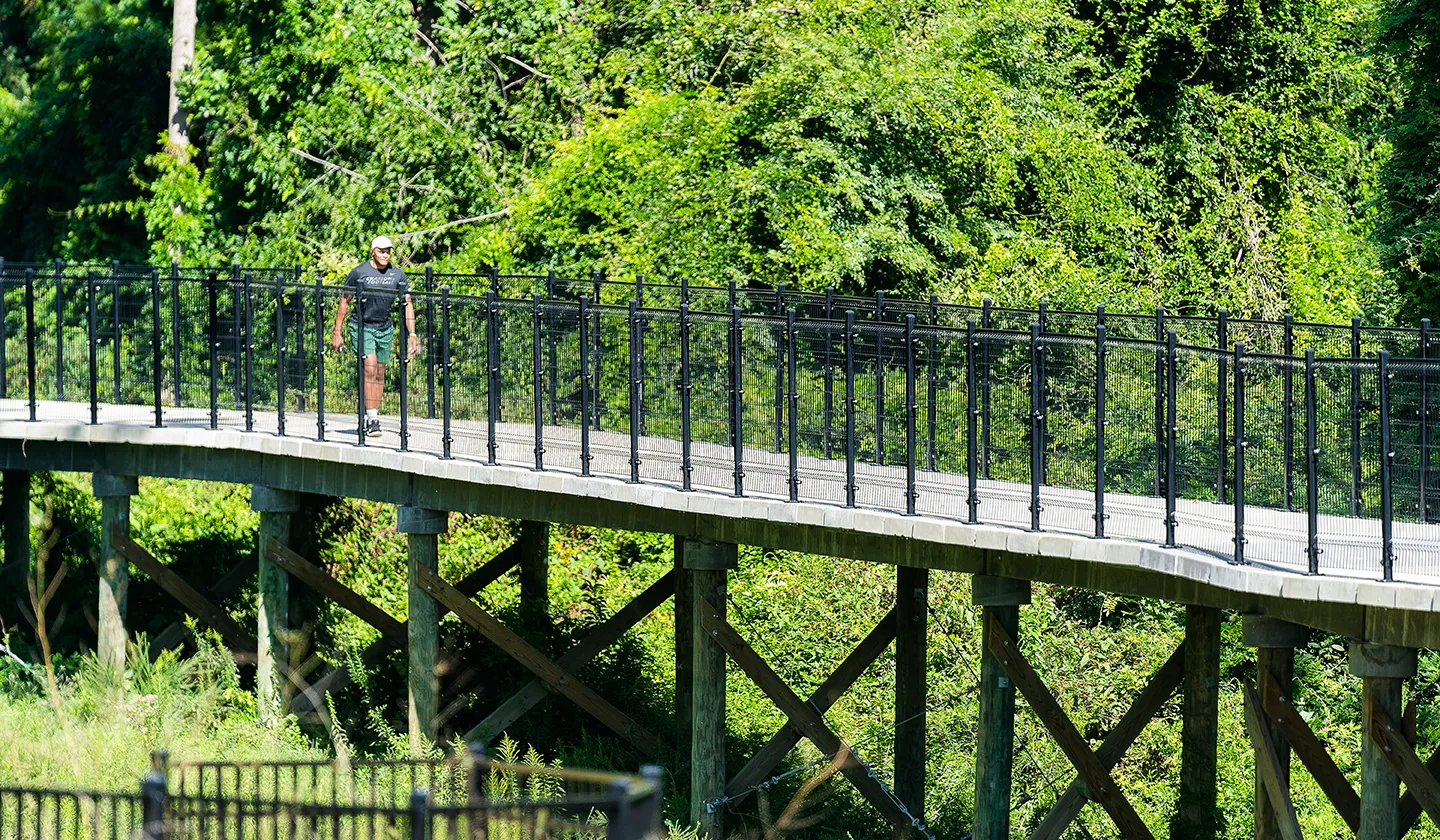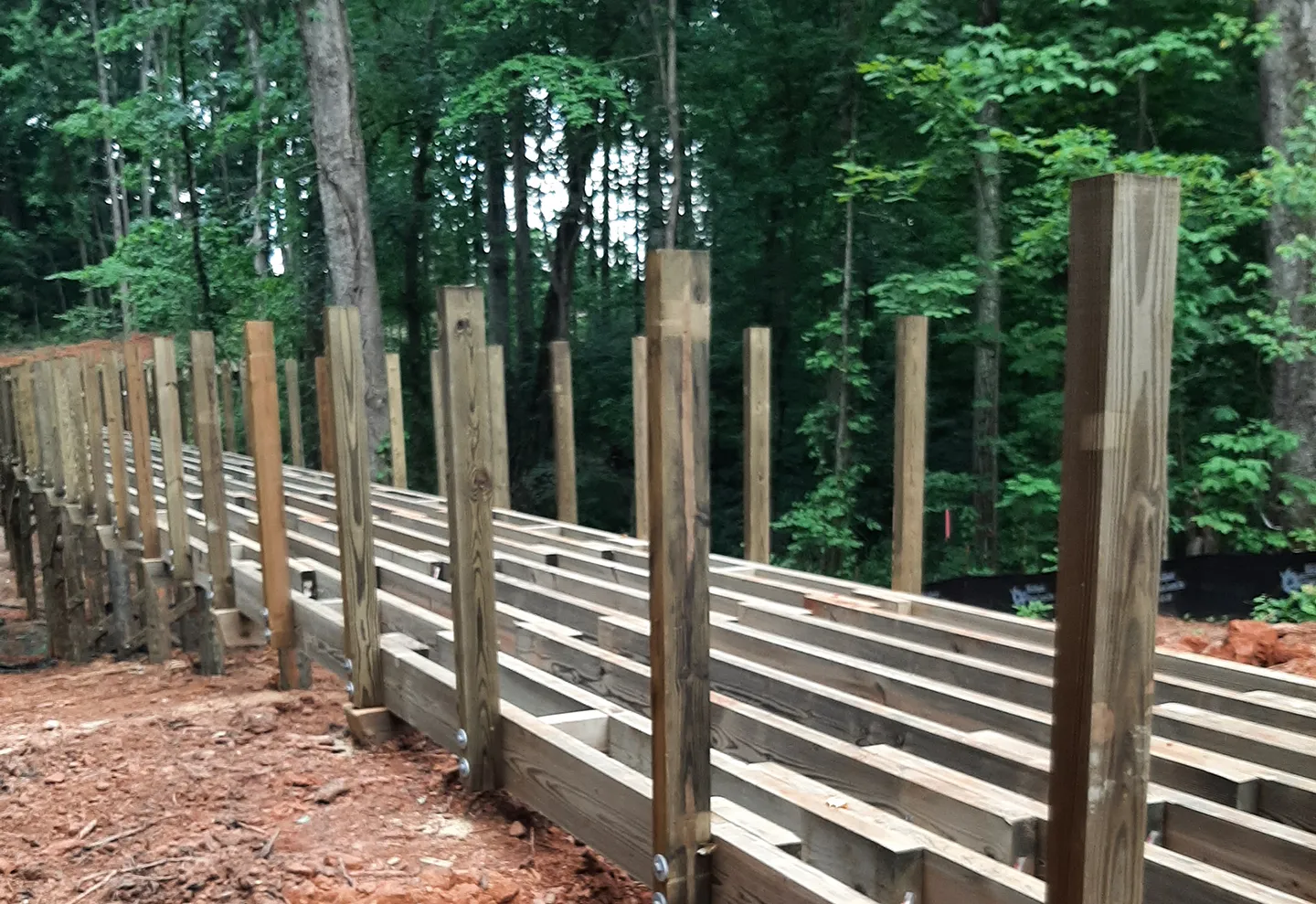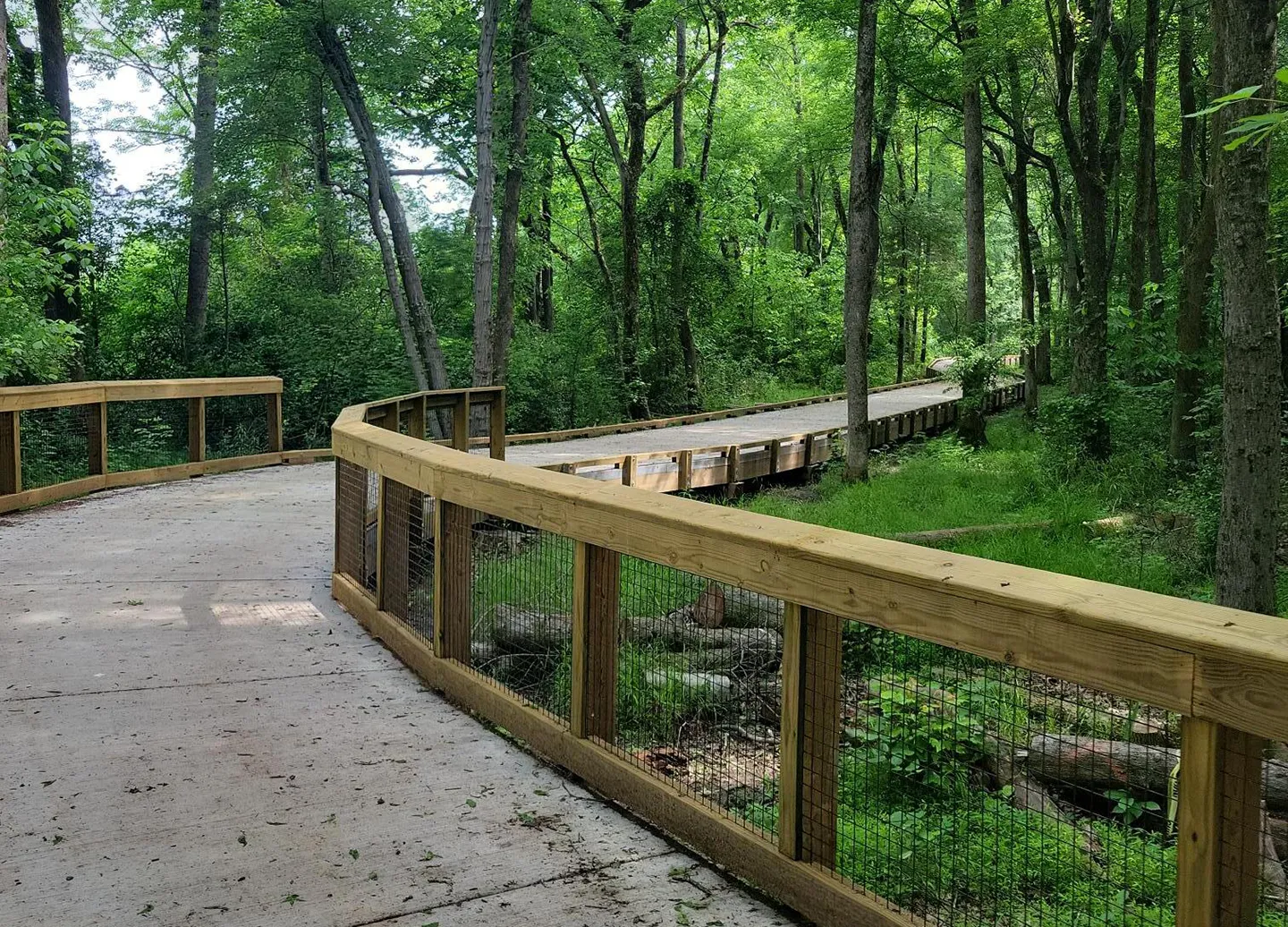With urban populations increasing worldwide, greenways offer a unique opportunity for residents to connect with nature close to home. However, greenways are often located in sensitive environments which can present complex challenges in planning, design, construction, and long-term maintenance. By employing the progressive design-build approach, teams can identify and mitigate specific challenges early on, saving time and lowering costs for greenway projects.
Reimagining Industry Standards for Greenways
The progressive design-build approach brings the designer, contractor, and owner of the project together, rather than working as three separate entities under traditional design-bid-build. The design-build team engages the strengths of all parties to work towards an efficient, economically viable, and environmentally friendly outcome for the project owner. Municipalities typically employ the progressive design-build approach on town halls, fire stations, police stations, and other public services sites because of its ability to save on time and cost.

Collaboration between the designer and contractor on the means and methods used for construction counters challenges presented by greenway environments.
While the progressive design-build approach offers significant time and cost savings to a variety of projects, greenways uniquely benefit from this approach due to the impact of contractors’ means and methods. Greenways are designed and constructed in narrow corridors, typically within floodways and floodplains, located near or within wetlands, and with minimal points of access. These limitations in location and access heighten the role of means and methods which can directly impact design decisions. To prioritize means and methods in the design, the designer, contractor, and owner of the design-build team can conduct careful examinations by walking the site during early design iterations to identify critical paths, address logistics, and determine feasibility of solutions. Walk-throughs of the site help to reduce significant field changes that can delay greenway projects for months or years.
Greenways are often located in sensitive environments which can present complex challenges in planning, design, construction, and long-term maintenance. By employing the progressive design-build approach, teams can identify and mitigate specific challenges early on, saving time and lowering costs for greenway projects. "
Tristan McMannis
Collaborating for Smarter Spaces
Promoting collaboration is vital to the design and construction processes for greenways. Land given to greenways is often attached to residential or commercial properties, which requires extensive planning and easement acquisitions. If additional easements are needed or existing easements need modification, this can significantly impact a greenway’s construction schedule. The progressive design-build approach minimizes the need to revise easements through early collaboration between the contractor and designer. By discussing challenges to logistics, points of access, and critical paths throughout the design phase and ordering long-lead items early on, the team can move quickly from design to construction. Greenway projects benefit from this multi-discipline awareness of specific challenges and opportunities, which reduce the likelihood of easement revisions, eminent domain, and schedule delays.
 The Downtown Huntersville Greenway project in Huntersville, North Carolina, benefits from proactive planning to navigate narrow corridors and make continuous field adjustments.
The Downtown Huntersville Greenway project in Huntersville, North Carolina, benefits from proactive planning to navigate narrow corridors and make continuous field adjustments.
Additional funding and change orders also impact a greenway project’s schedule. These projects are typically funded at one time, and adjustments to funding can be difficult to acquire later in the design or construction phases. Having the contractor working with the designer during the design process and available to revisit pricing frequently helps a project stay on budget. Also, this approach allows contractors to provide cost estimations at incremental milestones with input from their subconsultants. Continuous dialogue between the contractor and subconsultant within the progressive design-build approach can reduce the need to make late-stage substitutions and helps to keep the project on budget.
As greenways are often located in areas prone to flooding, or falling trees, it is important that long-term maintenance is addressed in the project’s early stages. The design-build team can identify areas of prospective maintenance and implement a design approach that minimizes future costs. The approach can employ a cost-benefit analysis for materials which may result in higher initial costs, but a lower long-term cost of ownership. Additionally, working with the staff responsible for maintaining the greenway keeps long-term access for repair and maintenance in mind, providing the best outcome for the owner and the community.
 Elements of the progressive design-build approach informed the design and construction to help protect the mature trees and limit impacts to the existing wetlands at the Torrence Creek greenway in Huntersville, North Carolina.
Elements of the progressive design-build approach informed the design and construction to help protect the mature trees and limit impacts to the existing wetlands at the Torrence Creek greenway in Huntersville, North Carolina.
Prioritizing Sustainability
Greenways require careful examination at a smaller scale than most projects, working with endangered plant species, hazard and heritage trees, wetlands, and other rare flora and fauna. The progressive design-build approach can help team members prioritize identifying and preserving these environmental elements during preliminary design. The contractor and designer can walk the site, address sensitive areas along alignments, and find solutions that minimize impacts to sensitive flora and fauna. Preservation of nature is a priority for greenway projects, and the progressive design-build approach improves protection of native and endangered plant species.
With the complex challenges presented by greenway projects, the progressive-design build approach offers a thorough and collaborative solution for minimizing both initial and long-term maintenance costs, mitigating impacts to sensitive environments, and reducing delays associated with traditional design-bid-build, ultimately providing a space that will be used by the community for years to come.